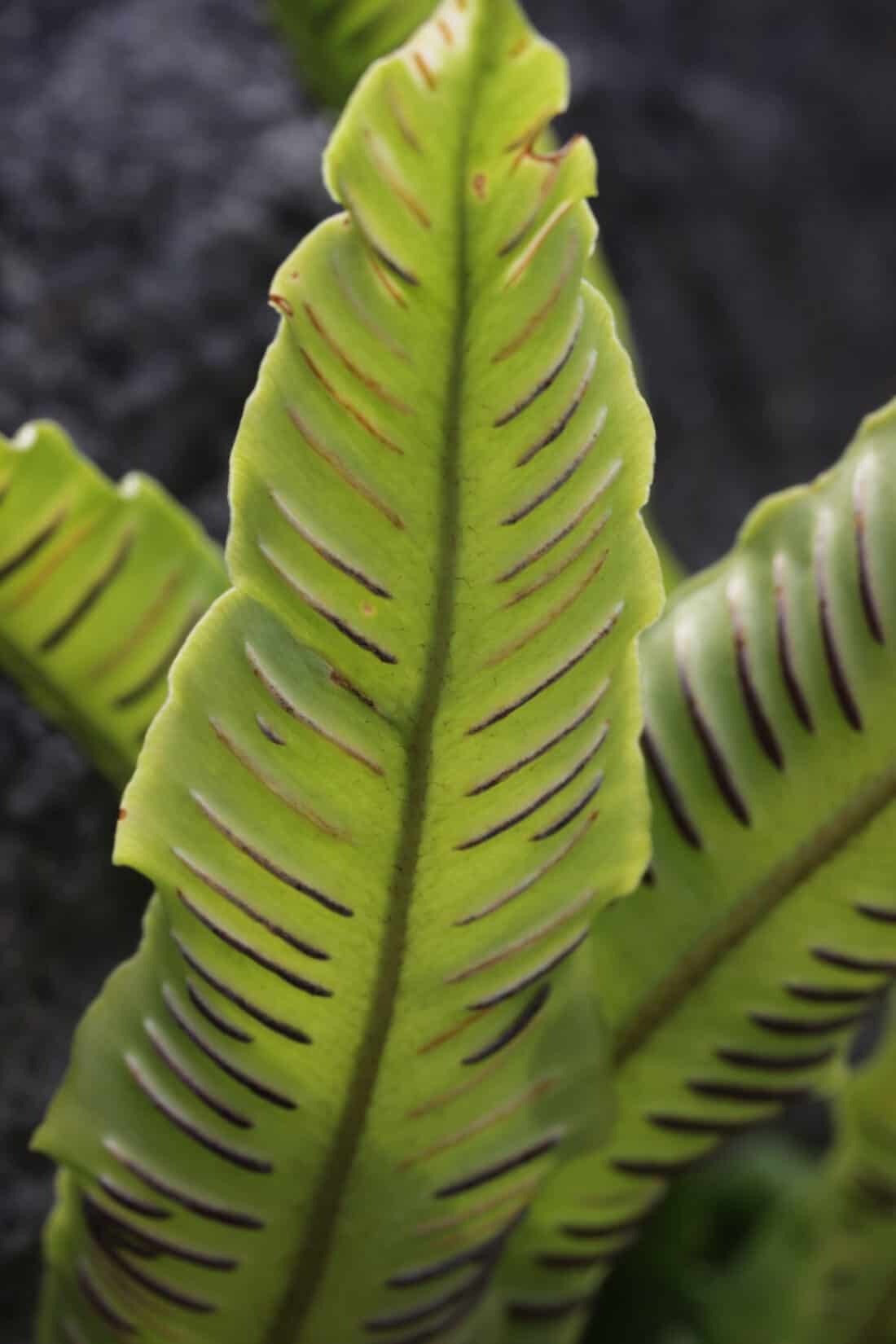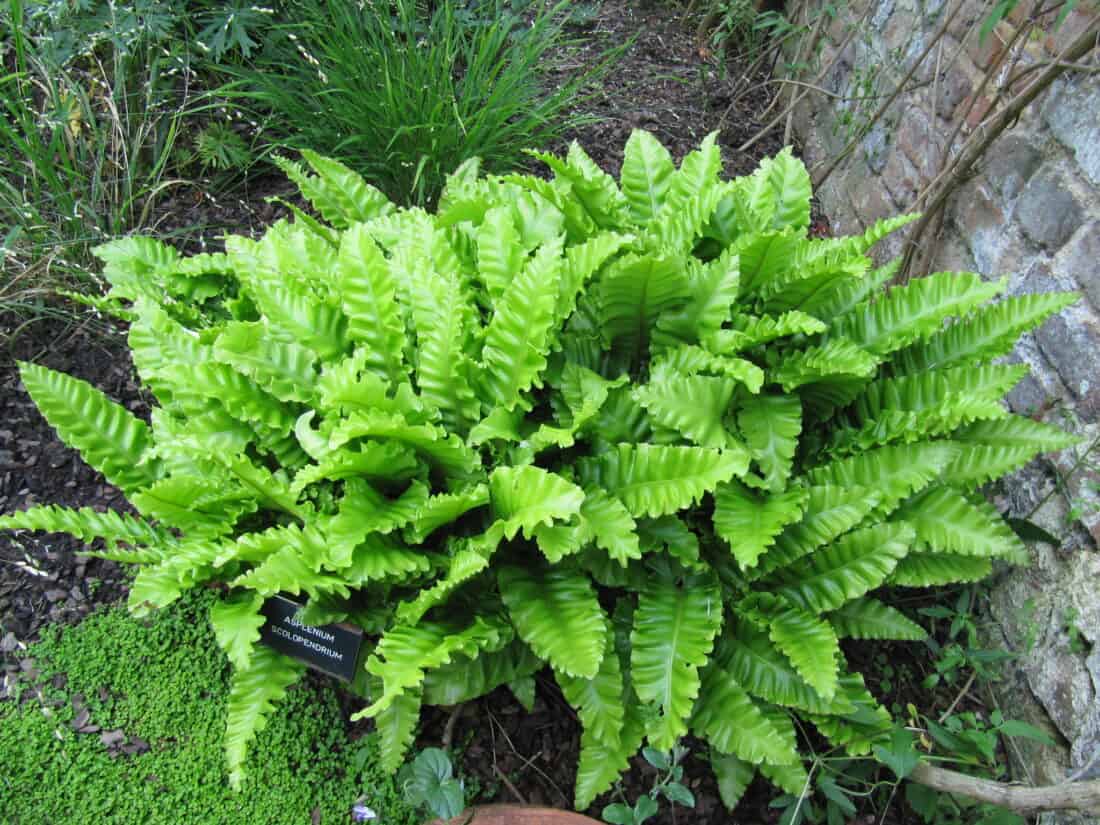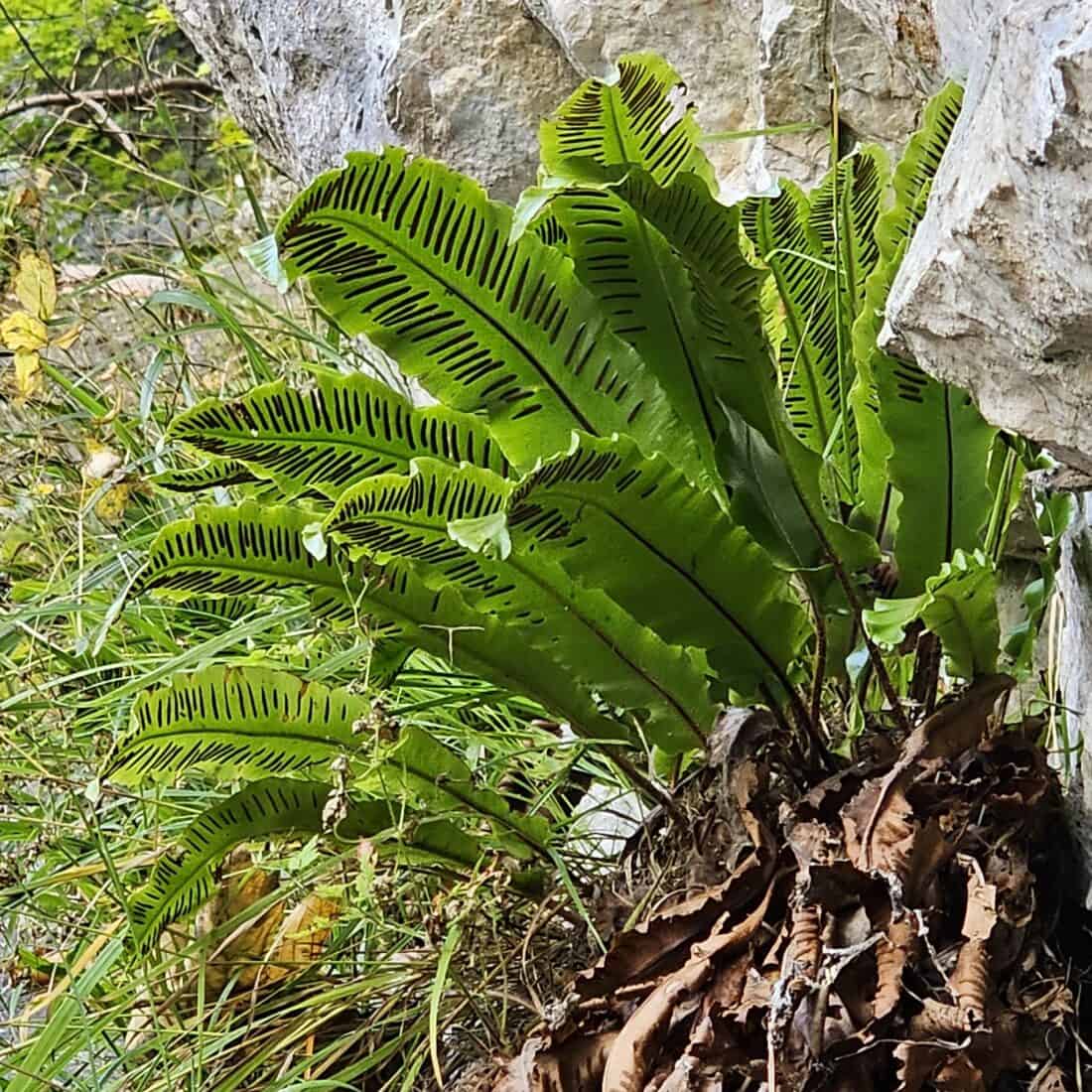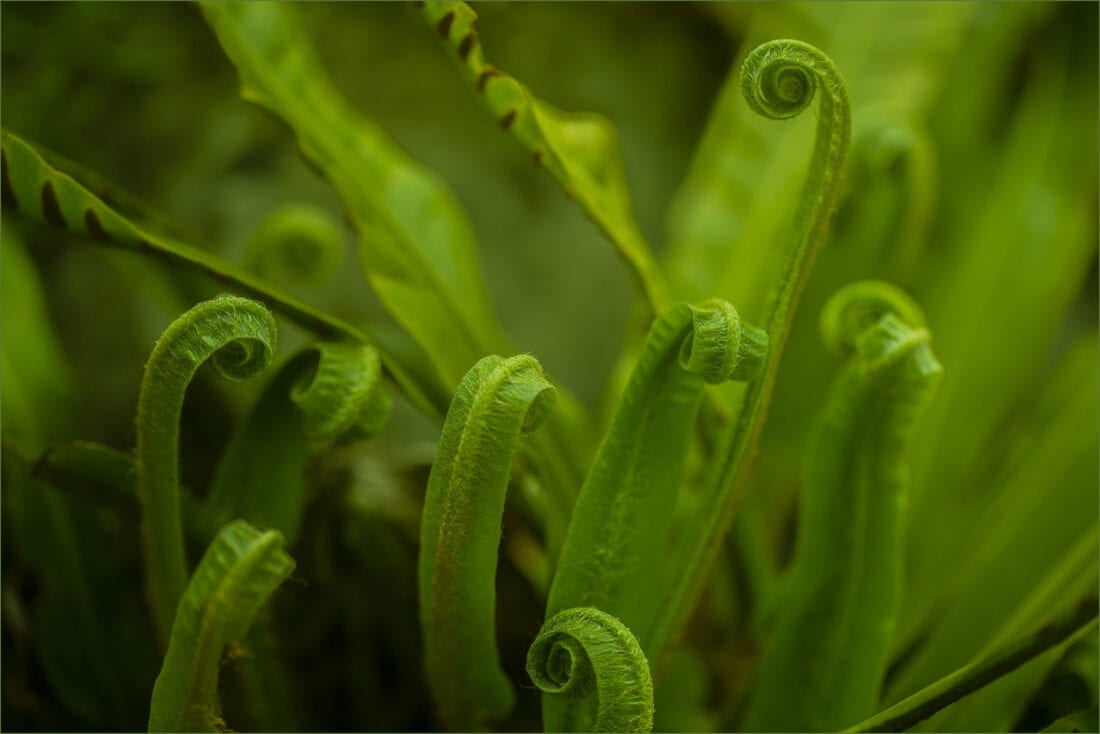Asplenium scolopendrium is an interesting fern. It is native to England and the US. If you are growing Hart’s tongue fern in your garden, it is likely the British native, prized for its hardiness and reliability and common in European gardens.
The true American version (asplenium scolopendrium var. americanum) is, however, quite rare. The distinguishing difference is that the American variety has a chromosome count of 144, while the European variety has a count of 72. It can be a smaller plant, but determining the difference is hard.

The Hart’s Tongue fern is a very distinct form of fern in that it has broad, strap-like fronds, unlike the delicately cut types of more familiar varieties. They have a short stem and can grow to any length from 4 to 24 inches (10 to 60cm), depending on where you plant them.
The shorter ones are usually found growing in walls or crevices.

In Tennessee, the American Hart’s-Tongue Fern is typically found deep within limestone sinks, surrounded by forest, and graced by mountain streams and waterfalls. I am fascinated by this description of the main naturally occurring location of the rare fern:
” The South Pittsburg location is perched halfway up the slope of the Cumberland Plateau within a rugged cove. The sinkhole is approximately 30 feet wide by 75 feet long and 75 feet deep. A waterfall cascades down one corner of the sink and the water disappears into a crack at the opposite corner only to emerge again well down in the valley bottom. The vegetation surrounding the sink is green and lush, bathed by the mist from the waterfall. The remaining ferns are shaded by the steep sides of the sink and cooled by the shade and mist from the waterfall. And to make the site more treacherous, Stinging Nettle guards the access down into the sink. ”
-David Lincicome in the Tennessee Conservationist.
Have I mentioned that I dream of being a plant hunter? I want to be able to say things like “When I was on expedition…”
Companion plants for Hart’s Tongue fern (asplenium scolopendrium)
There are lots of great options for companion plants for Harts Tongue fern. It offers an interesting texture that isn’t found in a lot of other plants, so it is a great partner to lots of other woodland and shade garden plants. It is evergreen (dig under the snow, and you will find its bright green leaves), and depending on the season, its bright color can often be the only thing that isn’t brown in a landscape.

Pair with other Ferns
Ferns all like the same type of conditions, so why not pair a few different varieties to create a textural tapestry of green? Try Athyrium filix-femina (Lady Fern or Fiddlehead fern), Dryopteris filix-mas (male Fern), or Polystichum acrostichoides (Chrismas fern) – all of which share similar habitat and are native to North America.
Woodland Garden Companions
Tiarella cordifolia (foamflower) is a great native partner, Heuchera (Coral Bells) (some are native) and Hostas are great leafy plants that can also be used to create a slightly more colorful tapestry of greenery.
Ajuga can be added as a low-level ground cover. Hart’s tongue fern is also stunning next to epimediums (Bishop’s cap) or soleirolias (Baby’s tears) planted at its feet.
If the planting site is on the wet side…
If you have ample and consistent moisture, there are some good plants that also appreciate a wetter environment and can stand some shade. Astilbe and also Ligularia dentata (Bigleaf ligularia) would be great companion plants, but these aren’t native to North America. Lobelia cardinalis (Cardinal flower) wants wetter lands but prefers a sunnier spot, which may also work. My personal favorite is Aruncus dioicus (goats beard) a striking shade plant.
If you have a shady Rock Garden…
Rockfoils (Saxifrages) are native to temperate, subarctic, and alpine areas (including in North America), and are often used in rock gardens and alpine displays because they can tolerate shade (making them a good partner for hearts tongue ferns). You can also grow Dianthus deltoides (Mainder pink) and Campanula.

Other Ideas for Companion Plants:
Complementary Foliage plants – Hakonechloa macra (Japanese Forest Grass), Carex spp. (Sedges), and Acorus gramineus (Sweet Flag).
More colorful accent plants: Primula spp. (Primrose), Pulmonaria spp. (Lungwort), Helleborus spp. (Hellebores), Digitalis spp. (Foxglove), and Aquilegia spp. (Columbine).
Architectural Plant partners: Rodgersia spp. (Rodgersia), Arisaema triphyllum (Jack-in-the-Pulpit) and Actaea spp. (Bugbanes).
It is a lovely plant worth seeking out. Have you grown it? What have you paired it with?
Asplenium scolopendrium var. americanum is Endangered.
American harts tongue fern is one of many native plants that is an endangered species. It is a rare variety and can only be found in a handful of places in North America (Central NY, Michigan, Alabama, Ontario, Canada, among a few others).
It is an epipetric plant (meaning that it grows on rocks) that prefers to grow on Silurian limestone. (Silurian refers to the geologic period where a marine limestone formed that typically has lots of marine fossils in it and higher levels of magnesium and calcium).
In England, many private gardeners hold “the national collection” of a particular plant in their gardens. I never quite determined if this was just a flex or if it really meant there was some sort of organized system by which private gardeners could find their gardens somewhat elevated in importance because they had spent so much effort on acquiring, cultivating, and maintaining a collection of plants. It always struck me as both odd and important and a uniquely British thing to do. But I wonder if something similar could help private gardeners save endangered native species here in the USA?
Suppose you happen to be able to provide the right habitat. Is there a way we could encourage a property owner to not just protect the natural landscape and home of endangered plants but go one step further and make an effort to cultivate their landscapes in a way that helps pull plants off of the threatened or endangered lists?
If you want to know more about American hart’s tongue fern, the USDA has more information.
I love this fern! I wonder if anyone sells it as a cut…